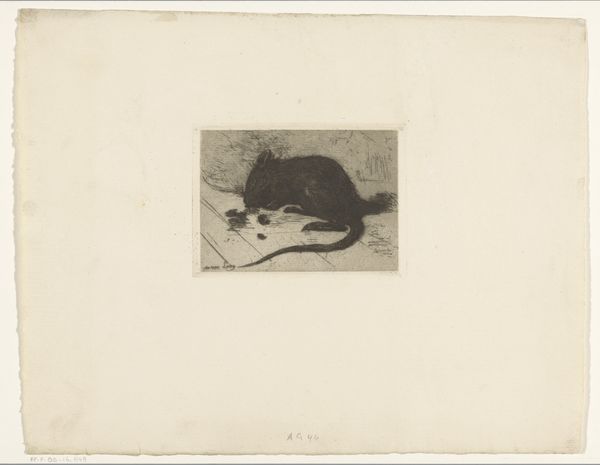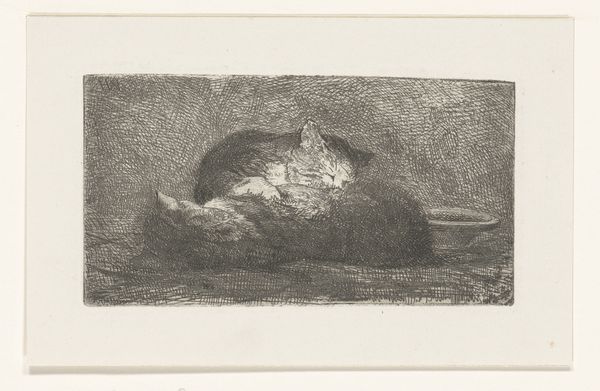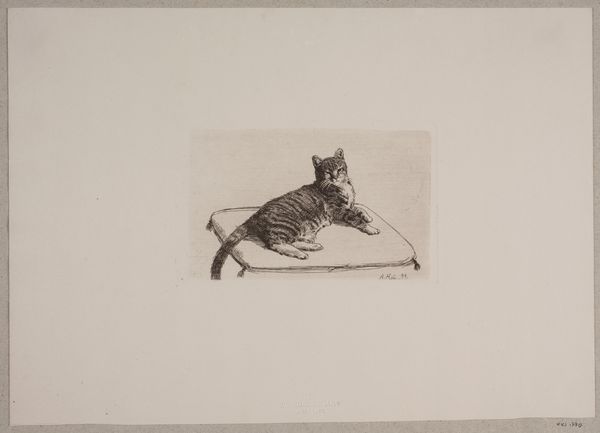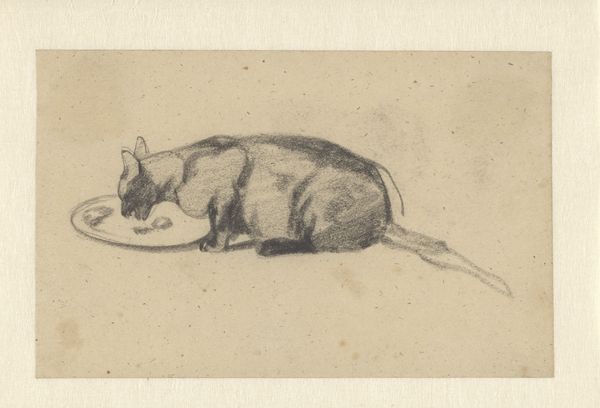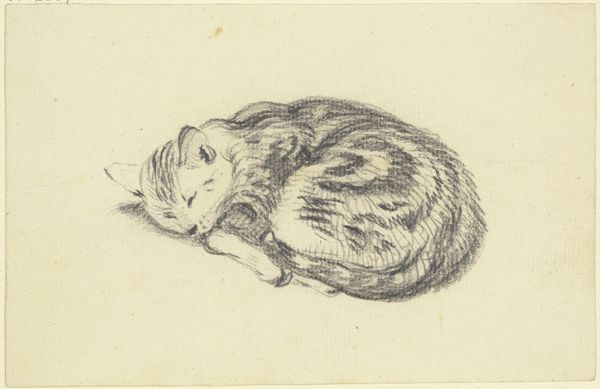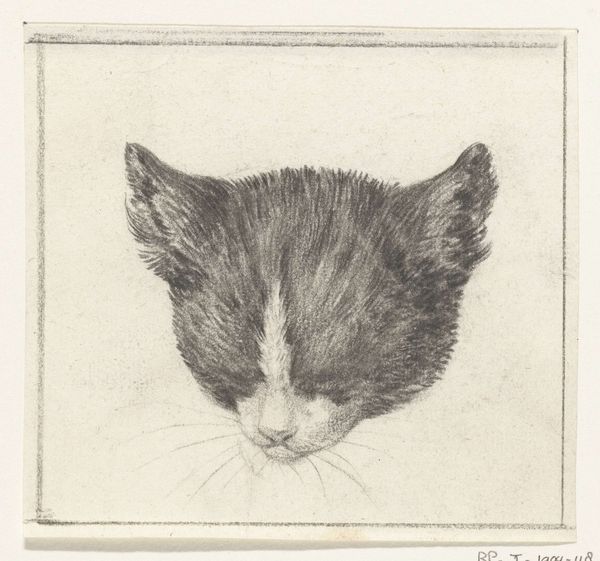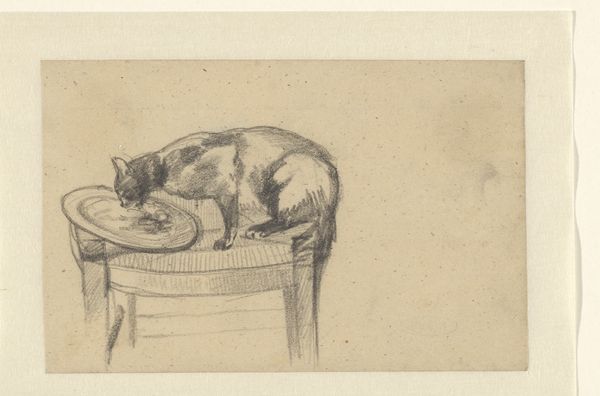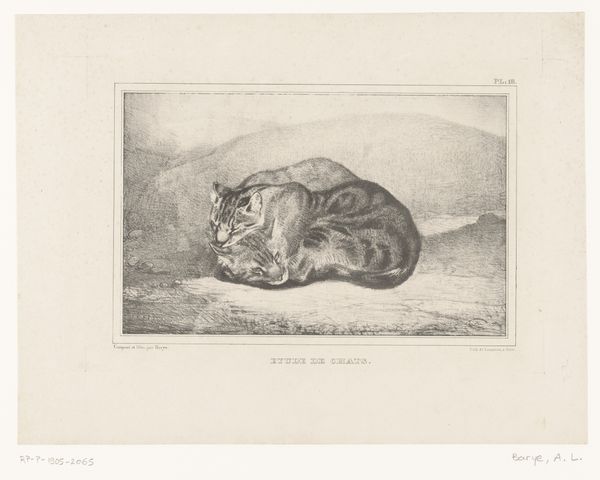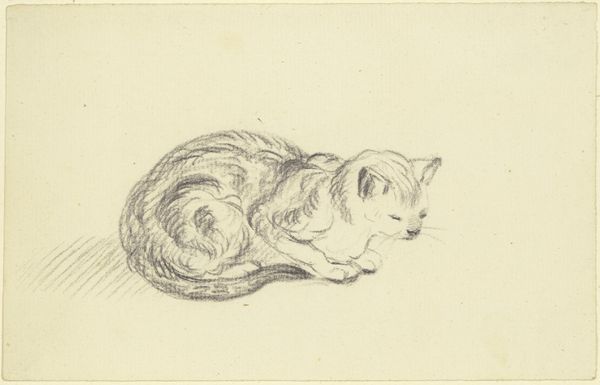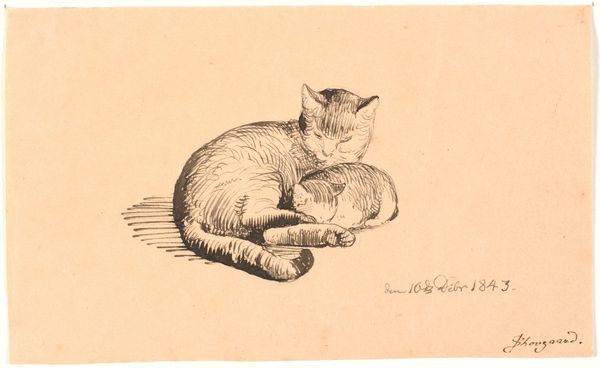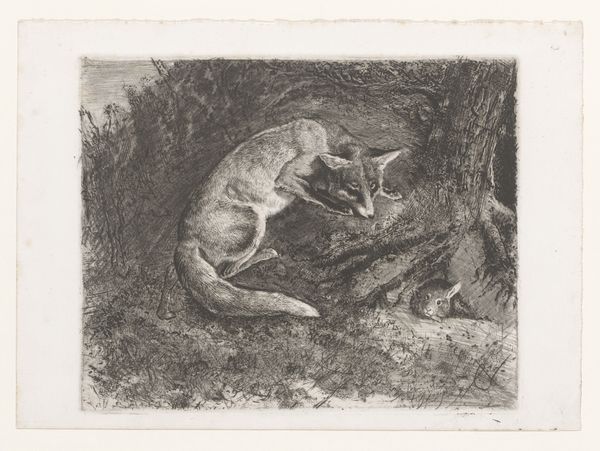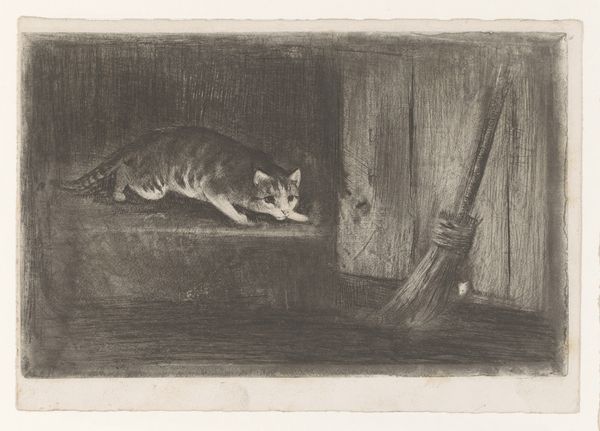
drawing, print, etching
#
drawing
#
animal
# print
#
etching
#
realism
Dimensions: height 100 mm, width 138 mm
Copyright: Rijks Museum: Open Domain
Curator: This etching, titled "Muis," was created by Jac van Looij sometime between 1865 and 1930. What do you think? Editor: It's wonderfully unassuming. The dark, crosshatched lines against the blank paper give a rather stark feeling. You get the sense of transience—this creature snatched in a fleeting moment. Curator: Yes, the process really emphasizes the immediacy. Van Looij likely used a needle to scratch directly into a coated metal plate before applying acid, achieving those sharp, dark lines. We're looking at a print, a reproduction, but it’s derived from such an intimate, manual process. And he returns to a quite commonplace subject. I’m always fascinated when the familiar is elevated. Editor: I find myself considering the context of its creation. At the time, realism was gaining momentum as a reaction against Romantic idealism. An image of a common rodent acquires social and political resonance by refusing to beautify or sentimentalize its subject. The very act of displaying such a print challenges accepted norms. Curator: Exactly. Consider also how readily these prints could be reproduced and disseminated. Etching as a medium lends itself to wider distribution, thereby influencing public perception of art and its subjects. It’s not an oil painting destined for a wealthy patron. These were created for broader consumption, even ending up illustrating books or pamphlets, bringing art to a much larger audience. Editor: Furthermore, you cannot separate it from the institutional context of the art world in Amsterdam at that time. Public exhibition spaces and the critical response of his contemporary artist friends like Breitner and Israels will have shaped both its reception and Van Looij's artistic decisions regarding subject, composition, and presentation. The realism employed could then reflect back and reveal socio-political fault lines. Curator: True. Even the scale speaks volumes about value, doesn't it? It compels the viewer to look closer, consider a subject matter typically overlooked or actively eradicated. But at the end of the day, it makes me appreciate the sheer labor involved in rendering the detail. Editor: A small image carrying larger implications— both then and now. I agree, its mundane simplicity gives it its powerful pull.
Comments
No comments
Be the first to comment and join the conversation on the ultimate creative platform.
